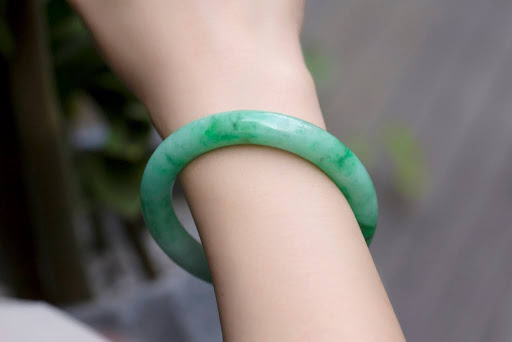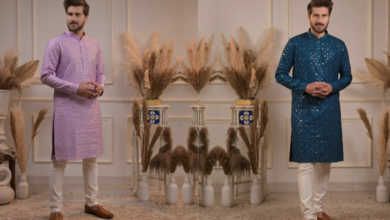Unveiling the Beauty: Exploring the Craftsmanship of Chinese Jade Bracelets

For millennia, Chinese jade bracelets have captivated hearts with their exquisite beauty, intricate craftsmanship, and profound cultural significance.
Renowned for their elegance and symbolism, these bracelets are not merely accessories but revered artifacts that reflect China’s rich history and artistic heritage.
In this exploration, we delve into the craftsmanship behind jade bracelets, uncovering the secrets of their creation and the cultural contexts that make them truly remarkable.
The Precious Stone
Delving into the revered status of jade in Chinese culture, this exploration unveils its embodiment of purity, integrity, and longevity.
It examines the spiritual qualities, protective powers, and historical significance of jade in art and rituals.
Furthermore, it distinguishes between types of jade, such as nephrite and jadeite, prized for their distinct characteristics and cultural importance.
Jade in Chinese Culture
In Chinese culture, jade holds a revered status, symbolizing virtues such as purity, integrity, and longevity.
Referred to as “yu,” jade has been cherished since ancient times, believed to possess spiritual qualities and protective powers. Its association with royalty, nobility, and divinity further elevates its significance, making it an indispensable material in art, rituals, and adornments.
Types of Jade
Chinese jade comes in various forms, each distinguished by its color, translucency, and texture. The most prized types include nephrite and jadeite, with shades ranging from creamy white to vibrant green.
Nephrite, historically more prevalent in China, exudes a subtle elegance, while jadeite, often imported, boasts vivid hues and exceptional clarity, fetching premium prices in the market.
From Raw Stone to Exquisite Bracelet
Illuminating the meticulous process of crafting Chinese jade bracelets, this exploration unveils the journey from selecting raw stones to creating symbolic masterpieces.
Delving into skilled artistry and cultural significance, it highlights the transformation of rough jade into polished bangles infused with meaning and beauty.
Selection and Carving
Crafting a Chinese jade begins with the careful selection of raw jade stones, chosen for their color, clarity, and potential for carving.
Skilled artisans then employ traditional techniques, such as hand-carving and polishing, to transform these rough stones into smooth, polished bangles.
The process demands precision, patience, and a deep understanding of jade’s natural properties, as even the slightest flaw can compromise the final piece’s beauty and value.
Design and Symbolism
Each Chinese jade is more than a piece of jewelry; it is a symbolic masterpiece infused with cultural meaning and aesthetic harmony.
Artisans draw inspiration from nature, mythology, and Chinese symbolism to create designs that resonate with tradition and convey auspicious blessings.
Common motifs include dragons, phoenixes, lotus flowers, and auspicious characters, each imbued with profound symbolism that speaks to the wearer’s aspirations and beliefs.
Inlay and Embellishment
To enhance the bracelet’s allure, artisans may incorporate intricate inlay work or embellishments using precious metals, gemstones, or enamel.
These decorative elements accentuate the jade’s beauty, adding layers of texture and dimension to the design.
Whether it’s delicate filigree patterns or vivid gemstone accents, these details elevate the bracelet from mere adornment to a work of art that exemplifies the highest standards of craftsmanship.
Beyond Ornamentation
Exploring the profound meaning behind jade bracelets, this segment delves beyond mere ornamentation.
It delves into the rich symbolism, centuries-old rituals, and cultural legacy embedded within these cherished adornments, highlighting their enduring significance beyond aesthetics.
Symbolism and Meaning
In Chinese culture, jade bracelets hold deep symbolic significance, representing prosperity, harmony, and protection.
Wearing a jade bracelet is believed to bring good fortune and ward off evil spirits, making it a popular choice for special occasions, such as weddings, birthdays, and festivals.
Additionally, the circular shape of the bracelet symbolizes eternity and the cyclical nature of life, reinforcing its role as a talisman of enduring blessings.
Rituals and Traditions
Throughout history, jade bracelets have been an integral part of rituals and traditions, marking significant milestones and honoring ancestral customs.
From gifting newborns with jade bracelets for protection to presenting brides with intricately carved bangles as symbols of marital bliss, these rituals reflect the profound reverence for jade and its role in shaping cultural identity.
Legacy and Heritage
The craftsmanship of jade bracelets is not merely a reflection of individual skill but a continuation of a centuries-old tradition passed down through generations.
Artisans apprentice under master craftsmen, learning time-honored techniques and absorbing the cultural wisdom embedded in each stroke of the carving tool.
This lineage of craftsmanship ensures the preservation of heritage and the perpetuation of artistic excellence for future generations to cherish.
Conclusion
In the realm of Chinese artistry, jade bracelets stand as enduring symbols of beauty, craftsmanship, and cultural heritage.
From the meticulous carving of raw stones to the intricate symbolism woven into each design, these bracelets encapsulate the essence of Chinese aesthetics and spiritual beliefs.
As we unravel the craftsmanship behind Chinese jade bracelets, we gain a deeper appreciation for their beauty and significance, reaffirming their status as timeless treasures cherished by generations past, present, and future.



